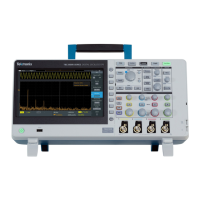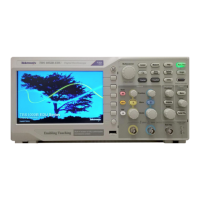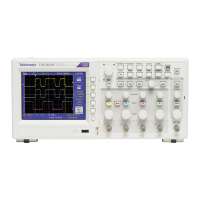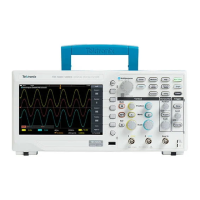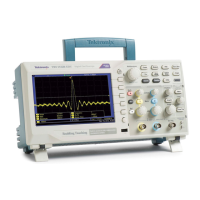PDUty (positive duty cycle) is the ratio of the positive pulse width to the signal
period, expressed as a percentage. It is measured on the first cycle in the
waveform or gated region. Positive Duty Cycle = ((Positive Width / Period) ×
100%
PEDGECount is the count of rising edges.
PERIod is the time required to complete the first cycle in a waveform or gated
region. Period is the reciprocal of frequency and is measured in seconds.
PHAse measures the phase difference (amount of time a waveform leads or lags
the reference waveform) between two waveforms. The measurement is made
between the middle reference points of the two waveforms and is expressed in
degrees, where 360° represents one waveform cycle.
PK2Pk (peak-to-peak) finds the absolute difference between the maximum and
minimum amplitude in the entire waveform or gated region.
POVershoot is the positive overshoot value over the entire waveform or gated
region. Positive Overshoot = ((Maximum – High) / Amplitude) ×100%
PPULSECount is the count of positive pulses.
PWIdth (positive width) is the distance (time) between the middle reference
(default = 50%) amplitude points of a positive pulse. The measurement is made
on the first pulse in the waveform or gated region.
RISe timing measurement finds the rise time of the waveform. The rise time is
the time it takes for the leading edge of the first pulse encountered to rise from a
low reference value (default is 10%) to a high reference value (default is 90%).
RMS amplitude measurement finds the true Root Mean Square voltage in the
entire waveform.
Examples
MEASUrement:IMMed:TYPe FREQUENCY defines the immediate
measurement to be a frequency measurement.
MEASUREMENT:IMMED:TYPE? might
return :MEASUREMENT:IMMED:TYPe RMS indicating that the immediate
measurement is the true Root Mean Square voltage.
M commands
TBS2000 Series Programmer 179

